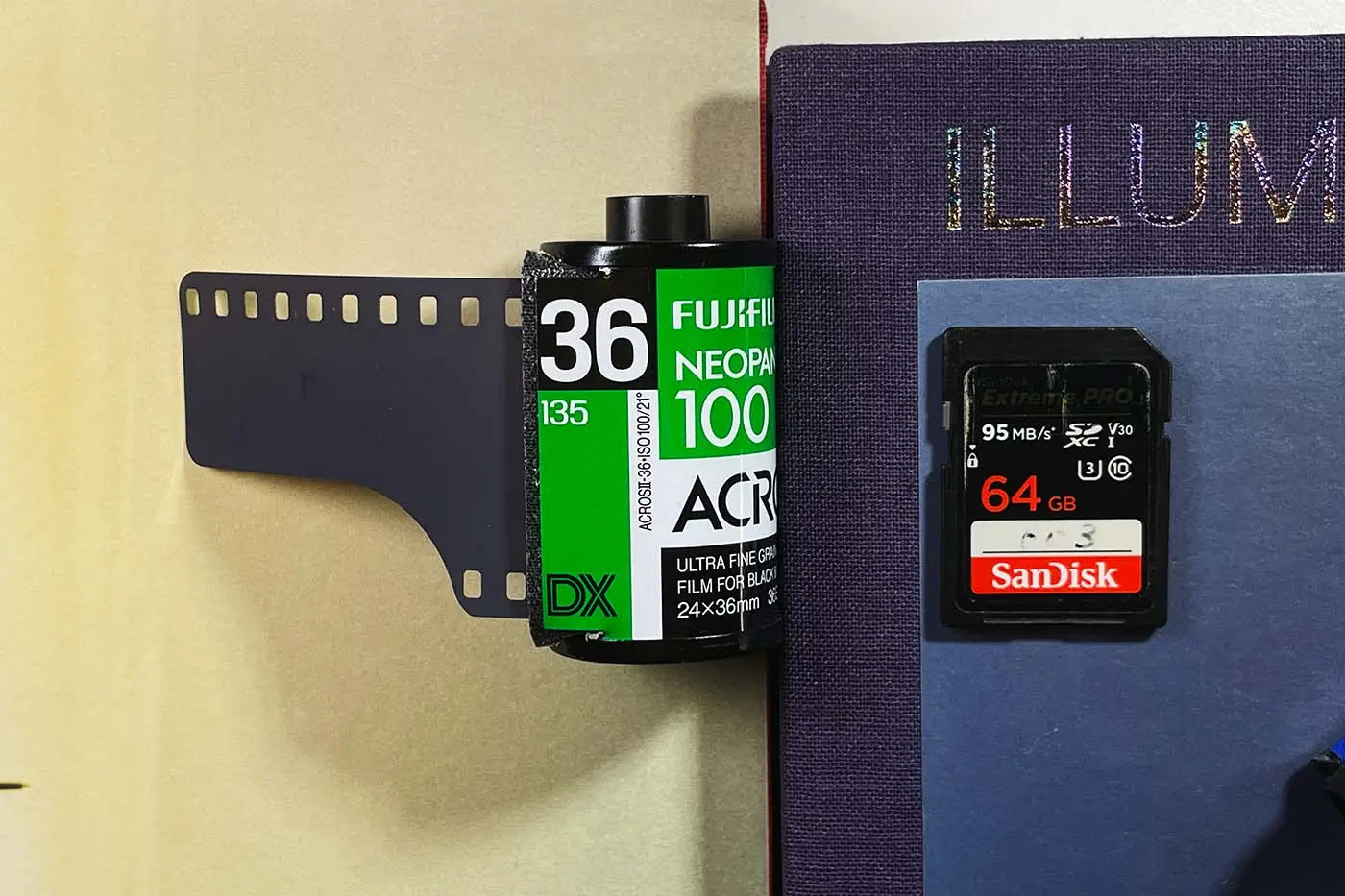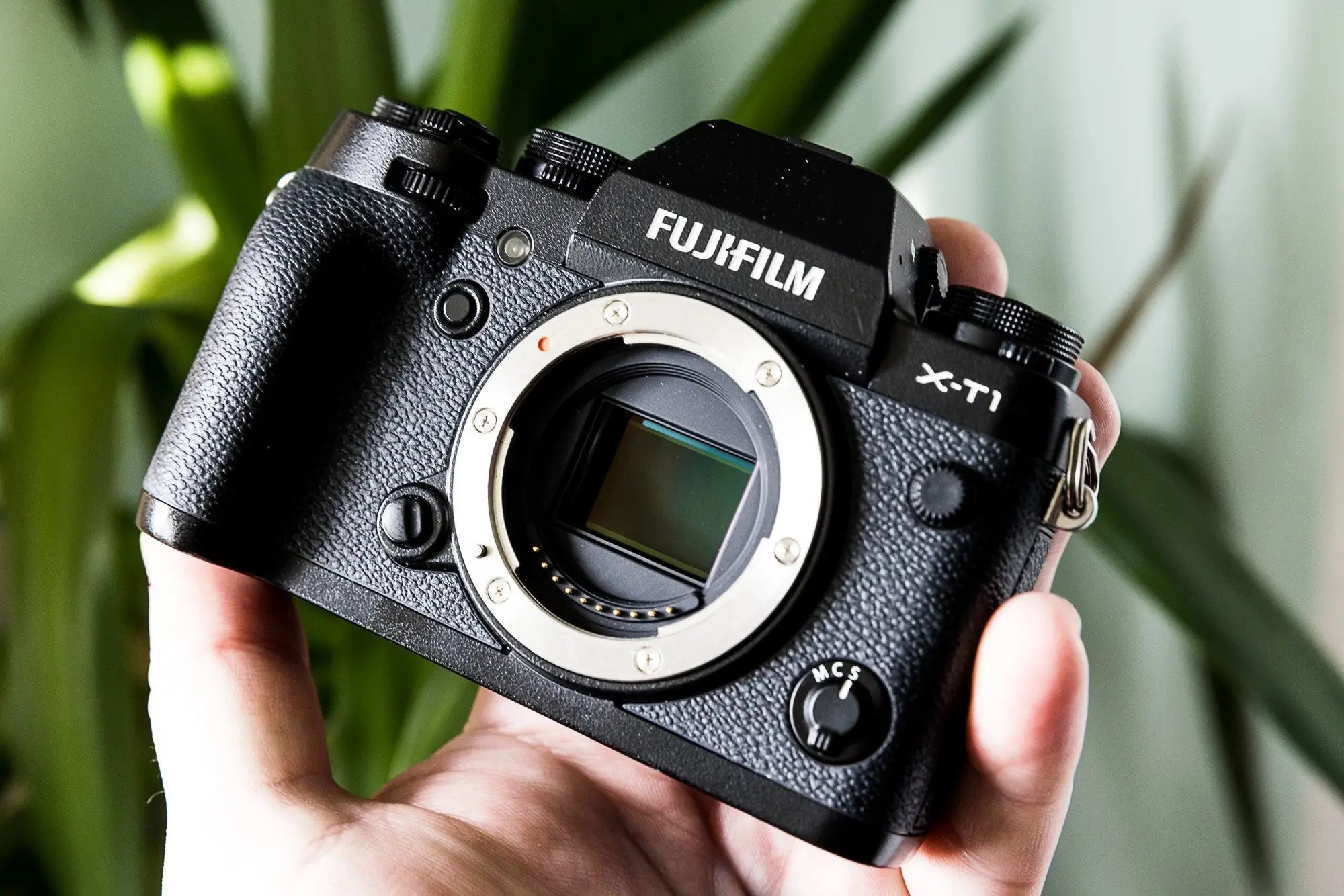. The world of photography offers a captivating realm of creative expression, where capturing moments transcends mere documentation and becomes an art form. The enduring debate between digital cameras and film cameras reflects a fundamental philosophical tension between modern technology and traditional craftsmanship.
While both mediums strive to capture the essence of our world, they do so through divergent approaches, each with its own unique strengths and limitations. This article delves into the intricate differences between digital and film photography, exploring their technical mechanisms, artistic expressions, and the profound impact they have on the way we view and experience the world around us.

Introduction to difference between digital camera and film camera
Photography, at its heart, is an act of observation and interpretation. It involves capturing fleeting moments in time and shaping them into enduring visual narratives. The choice between digital and film cameras is not merely a technological preference but a reflection of one’s artistic vision and values.
The Evolution of Photography
The journey of photography began with the pioneering work of Nicéphore Niépce in the early 19th century, who captured the first permanent photographic image using a camera obscura and light-sensitive materials. The invention paved the way for the development of film photography, which dominated the world of image capture for over a century. Film cameras, with their delicate chemical processes and the tangible nature of the medium, instilled a sense of ritual and anticipation in the photographer’s craft.
The arrival of digital cameras in the late 20th century marked a revolutionary shift in the landscape of photography. This new technology, driven by electronic sensors and digital data, offered unprecedented levels of immediacy and control, allowing for instant review and manipulation of images. Today, digital photography has become the dominant force in the industry, democratizing the art form and providing unparalleled accessibility to photographers of all levels.

Importance of Choosing the Right Camera
Selecting the right camera for your photographic endeavors is essential, as it shapes the creative possibilities and limitations you encounter. The choice between digital and film is a deeply personal one, influenced by factors such as artistic style, technical preferences, and even the subject matter being photographed. A landscape photographer may find the unpredictable nature of film film complements their desire to capture subtle variations in light and color, while a wildlife photographer might prioritize the speed and reliability of digital cameras for capturing fleeting moments in nature.
Fundamental Principles of Operation
The core difference between digital and film cameras lies in their underlying technology and operational mechanisms. Understanding these fundamentals sheds light on the distinct qualities and limitations of each medium.
How Film Cameras Work
Film cameras function on the principle of light-sensitive chemicals reacting to exposure. The heart of the system is the film itself, a thin strip of transparent material coated with light-sensitive silver halide crystals. When light passes through the camera lens and onto the film, it activates a chemical reaction within the crystals, capturing the scene’s image.

The Chemical Process of Film Development
The magic of film photography lies in the intricate process of film development, where the invisible image captured on the film is transformed into a tangible print. After exposure, the film is meticulously developed in a darkroom using a series of chemical baths that amplify the exposed silver halide crystals while removing unexposed ones. The result is a negative image—a reversed representation of the original scene—from which prints can be made.
This process is both time-consuming and nuanced, influenced by factors such as film type, developer solution, and developing time. Each choice introduces variables that add to the unique character of the final image, imparting a sense of organic unpredictability to the photographer’s work.
Digital Photography vs Film Photography A Comprehensive Comparison
Digital Cameras: Mechanics and Technology
Digital cameras, in contrast to their film counterparts, rely on electronic sensors to capture light and convert it into digital data. These sensors, known as CMOS (Complementary Metal-Oxide Semiconductor) or CCD (Charge-Coupled Device) sensors, consist of millions of tiny pixels that respond to light. When light strikes a pixel, it creates an electrical charge proportional to the intensity of the light.

Electronic Sensors and Image Capture
The electrical charges generated by the sensor pixels are then read by circuitry and processed into digital data, forming a digital image file. This file can be stored on a memory card, instantly displayed on the camera’s LCD screen, or transmitted to other devices. The digital image can then be edited, shared, or printed at a later time.
Artistic Expression in Photography
Beyond their technical complexities, digital and film cameras offer distinct artistic palettes, each contributing unique qualities to the final image. The choice between these mediums often reflects a personal aesthetic preference, a yearning for a particular look and feel.
Unique Qualities of Film Photography
Film photography, with its inherent limitations and unpredictable nature, embraces a certain rawness and authenticity. The grain structure, which is characteristic of film photographs, is often perceived as a mark of authenticity, a tangible reminder of the chemical processes involved in its creation.
The Organic Nature of Film’s Grain
The grain patterns in film photographs are not uniform but vary depending on the type of film used, development conditions, and even the camera’s settings. This organic variability contributes to the image’s character, imbuing it with a certain charm and texture that is absent in digital images.

Capturing Spontaneity with Film
The act of taking a photograph with a film camera is often described as a more deliberate and contemplative experience. With each shot, the photographer is aware of the limited number of exposures available on the roll of film, prompting a more conscious approach to composition and framing. This can lead to a more meaningful and intentional engagement with the subject matter.
The Consistency of Digital Images
Digital cameras, with their electronic sensors and precise control over exposure and color balance, offer remarkable consistency in their image output. The digital image is often described as “clean” and “crisp,” lacking the grain and unpredictability of film.
Achieving Control Over Exposure with Digital
Digital cameras allow for unparalleled control over exposure, white balance, and other settings. The photographer can instantly view the image on the LCD screen and adjust the settings accordingly, ensuring that the final image is accurately exposed and true to the scene.

The Experience of Photographing
The experience of photographing with digital and film cameras differs significantly, shaping the photographer’s workflow, creative process, and the emotional connection they develop with the medium.
Anticipation in Film Development
For many photographers, the allure of film photography lies in the anticipation that accompanies the development process. After shooting a roll of film, there is a period of waiting, a sense of suspense as the photographer awaits the revelation of the images captured.
Immediate Feedback with Digital Cameras
Digital cameras, on the other hand, provide instant feedback, allowing the photographer to immediately review and evaluate their images. This immediacy provides a sense of control and allows for quick adjustments to shooting techniques, ensuring that the final image is as intended.
Emotional Connections to Each Medium
The choice between digital and film can also reflect a personal preference or an aesthetic sensibility. Film photographers often value the tactile experience of handling film, the ritual of developing prints in a darkroom, and the unpredictable beauty that emerges from the chemical process. Digital photographers, on the other hand, may appreciate the convenience, versatility, and immediacy offered by digital cameras, allowing them to experiment and share their images instantly.
Technical Considerations
Both digital and film photography have evolved tremendously over the years, with significant advancements in technology and techniques. It’s essential to understand the technical aspects that influence each medium’s capabilities and limitations.

Resolution and Detail in Digital Photography
Digital cameras have witnessed remarkable improvement in resolution and detail, with modern cameras boasting millions of pixels, capable of capturing images with incredible clarity. This high resolution allows for extensive cropping without significant loss of detail, providing flexibility in post-processing and image composition.
Flexibility in Post-Processing
Digital images are inherently flexible, allowing for extensive manipulation and editing using software programs. The ability to adjust exposure, color balance, contrast, and other parameters gives photographers unparalleled creative control over their images.
The Role of Digital Editing Software
Digital editing software has become an essential tool in the digital photographer’s arsenal. Programs like Adobe Photoshop, Lightroom, and GIMP allow for sophisticated image adjustments, retouching, special effects, and complex manipulations, pushing the boundaries of what is possible in digital photography.
Authenticity in Film vs. Digital Manipulation
The rise of digital manipulation tools has sparked debates about the authenticity and integrity of photography, particularly in the realm of digital editing. While some argue that digital manipulation can enhance images and create interesting artistic effects, others view it as a form of deception, diminishing the value of a photograph’s authenticity.

Practical Uses and Scenarios
The choice between digital and film cameras often depends on the specific photographic project or scenario. Each medium excels in particular applications, offering advantages and disadvantages depending on the demands of a specific task.
Landscape Photography: A Comparative Analysis
Landscape photography, with its emphasis on capturing stunning vistas and natural beauty, often benefits from the unique qualities of both film and digital cameras. Film photographers often gravitate towards film for its ability to capture a sense of atmosphere and depth, while digital photographers appreciate the control and flexibility offered by digital cameras for capturing a wide range of light and shadow conditions.
Portrait Photography: Film vs. Digital Choices
Portrait photography is a challenging yet rewarding genre that demands sensitivity, attention to detail, and a skillful understanding of light and shadow. Film, with its subtle grain structure and subdued colors, can create intimate and timeless portraits, while digital cameras offer precise control over exposure and skin tones, facilitating a more clinical and controlled approach to capturing likenesses.

Event Photography: Speed and Convenience
Event photography, whether weddings, concerts, or conferences, often requires speed, efficiency, and the ability to capture moments in rapid succession. Digital cameras excel in these scenarios, offering rapid burst shooting capabilities, instant image review, and the ability to share images in real-time.
The Debate: Tradition versus Modernity
The ongoing debate between digital and film cameras encapsulates a broader cultural shift, a tension between tradition and modernity in the world of art.
Philosophical Reflections on Photography
The question of whether digital or film photography is “better” often leads to philosophical discussions about the nature of art and the role of technology in the creative process. Some photographers believe that the technical limitations of film photography—its unpredictability, its reliance on manual processes—contribute to its artistic value, fostering a sense of creativity and spontaneity.
Value of Tactile Experience in Film Photography
For many photographers, the tactile experience of film photography is an integral part of the artistic process. The act of loading film into a camera, manually adjusting settings, and then developing the images in a darkroom creates a connection to the medium that is often absent in the digital workflow.
Cultural Shifts in the Photography Community
The rise of digital photography has transformed the photography community, democratizing the art form and making it accessible to a wider audience. However, this shift has also led to a certain homogenization of visual styles, as digital techniques and filters have become increasingly prevalent.

Financial Considerations
The choice between digital and film cameras often involves a consideration of financial factors, as the costs associated with each medium can vary significantly.
Initial Investment: Cost of Equipment
Digital cameras, especially high-end models, can be costly, with prices ranging from hundreds to thousands of dollars. However, the cost of digital cameras has decreased considerably in recent years, making them more affordable for a wider range of photographers. Film cameras, on the other hand, can range from relatively inexpensive vintage models to expensive, high-end medium format cameras.
Long-term Costs of Film Development
Film photography involves ongoing costs associated with film, processing, and printing. While the cost of film has remained relatively stable, the availability of film processing labs has decreased, making it more challenging and expensive to develop film.
Accessibility of Digital Photography
Digital photography is generally more accessible than film photography due to the widely available technology and relatively low cost of entry. Digital cameras are readily available at a range of price points, and there are numerous resources for learning digital photography.

Notes
This article has explored the intricate nuances of digital and film photography, examining their technical differences, artistic expressions, practical applications, and cultural implications.
Understanding Personal Preferences
Ultimately, the choice between digital and film photography is a deeply personal one. The ideal medium for a particular photographer depends on their individual preferences, artistic vision, and photographic intentions.
Exploring Hybrid Approaches
Some photographers explore hybrid approaches, incorporating both digital and film photography into their work. This allows for a broader range of creative expression, blending the best of both worlds.
Mistakes to Avoid
While the choice between digital and film photography is a matter of personal preference, there are certain mistakes that photographers should avoid, regardless of their chosen medium.
Over-reliance on Technology in Digital Photography
Digital photography offers unparalleled control and flexibility, but it’s essential to avoid becoming solely reliant on technology, neglecting the fundamental principles of photography. A strong understanding of light, composition, and framing is essential, regardless of the technology used.
Neglecting Film’s Potential for Creativity
Film photography, despite its limitations, offers a unique creative potential, fostering a sense of spontaneity and experimentation. Neglecting the potential of film and focusing only on digital techniques can limit a photographer’s creative expression.

Underestimating the Learning Curve
Both digital and film photography require a learning curve, demanding time, dedication, and a commitment to continuous learning. Underestimating the learning process can lead to frustration and disappointment.
Frequently Asked Questions
The following are some frequently asked questions about digital and film photography:
Which is better: digital or film?
There is no definitive answer to this question, as the “best” medium depends on individual preferences, artistic goals, and specific photographic projects.
Can you achieve a film look with digital cameras?
Yes, various digital techniques and software programs can be used to emulate the look and feel of film photography, including grain simulation, color grading, and other post-processing techniques.
What are the advantages of film over digital?
Film photography offers a unique aesthetic, a tangible connection to the medium, and the potential for creative surprises.
Is it possible to combine both mediums effectively?
Yes, many photographers find that combining digital and film photography allows for a broader range of creative possibilities, blending the strengths of both mediums.

Conclusion
The choice between digital and film cameras is a journey of self-discovery, a quest to find the medium that best aligns with one’s values and artistic vision. Both formats offer a means of capturing the world’s beauty and telling stories that evoke emotions. Whether exploring the textured nuances of a film photograph or the sharp clarity of a digital image, the art of photography lies in the creative intention and the ability to connect with the subject matter on a meaningful level.
Embracing Individual Choices in Photography
Ultimately, the choice between digital and film photography is a matter of personal preference, a reflection of one’s unique artistic journey.
The Journey of Capturing Moments
For photographers, the journey of capturing moments in time is an ongoing adventure, a constant exploration of new techniques, artistic expressions, and technological advancements. Whether embracing the tradition of film photography or the convenience of digital cameras, the art of photography remains a timeless and rewarding pursuit, forever evolving and reflecting our changing world.



